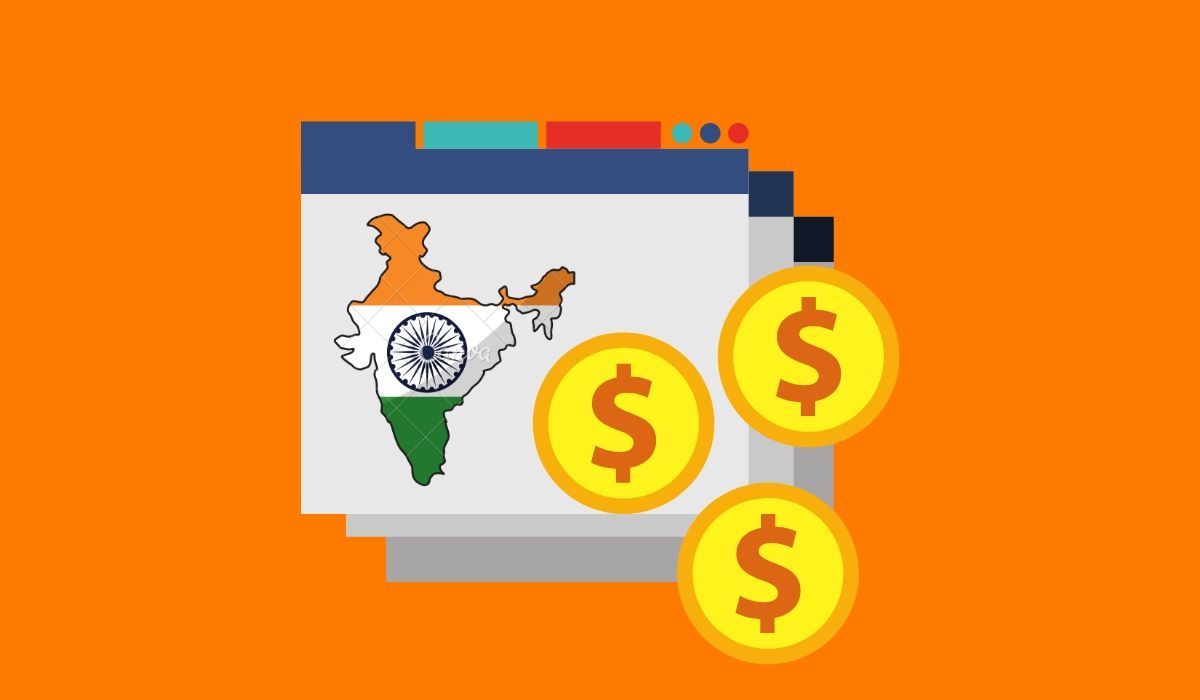Embarking on the journey of finding the perfect gift for your loved ones is always an exciting endeavor. With special occasions like anniversaries, Valentine’s Day, or birthdays, there’s a wonderful opportunity to express your feelings through thoughtful and heartfelt gifts.
When it comes to giving, Ferns N Petals excels as the biggest flower and gift shop in India, bringing happiness and enduring memories to millions of people across the globe. This reputable company, which boasts an extensive network of over 320 store locations, is now synonymous with celebrations, making it the perfect place to find that unique present.
In this article, we will delve into the successful journey of Ferns N Petals, its founder, business model, funding, competitors, and more.
Ferns N Petals – Company Highlights
| STARTUP NAME | FERNS N PETALS |
|---|---|
| Headquarters | Gurgaon, Haryana, India |
| Sector | Gifts and Online Shopping |
| Founder | Vikaas Gutgutia |
| Founded | 1994 |
| Website | fnp.com |
Ferns N Petals – About
Ferns N Petals – Industry
Ferns N Petals – Founder and Team
Ferns N Petals – Startup Story
Ferns N Petals – Mission and Vision
Ferns N Petals – Name, Tagline, and Logo
Ferns N Petals – Business Model
Ferns N Petals – Revenue Model
Ferns N Petals – Esops
Ferns N Petals – Challenges Faced
Ferns N Petals – Funding and Investors
Ferns N Petals – Growth
Ferns N Petals – Advertisements and Social Media Campaigns
Ferns N Petals – Awards and Achievements
Ferns N Petals – Competitors
Ferns N Petals – Future Plans
Ferns N Petals – About
Since its establishment in 1994 as a dedicated flower bouquet delivery service, Ferns N Petals has grown into India’s largest florist chain, boasting over 400 store locations. The company, which started out as a floral-focused business, now provides a wide range of services, including retail, e-commerce, weddings, events, gardens, handicrafts, and more.
What sets Ferns N Petals apart is not just its extensive offerings but also its unwavering commitment to creating exceptional experiences for every celebration. The brand makes gifting easy with an easy to use online platform and a commitment to quality, making sure that every gift conveys happiness and thoughtfulness.
Ferns N Petals is essentially a curator of emotions, dispersing joy and preserving memories for each unique occasion, rather than just a supplier of gifts.
Ferns N Petals – Industry
The gift industry in India is experiencing a significant transformation, with personalized gifts taking center stage. With a predicted value of USD 87.12 billion by 2029, the market, valued at USD 75.02 billion billion in 2024, is expected to increase significantly. This impressive increase is ascribed to the growing inclination for bespoke services and presents that are made by hand.
The gift business is seeing a move toward personalized offers that go beyond the traditional as consumers look for special and meaningful ways to express their thoughts. The market is expected to develop at a Compound Annual Growth Rate (CAGR) of 3.74% through 2031, meeting the increasing demand for unique and considerate presents in India’s dynamic environment.
Ferns N Petals – Founder and Team
Vikaas Gutgutia is the Co-Founder and the Managing Director of Ferns N Petals.

Vikaas Gutgutia
Vikaas Gutgutia, the Co-Founder and Managing Director of Ferns N Petals, is a visionary entrepreneur whose journey from Bihar to Kolkata has left an indelible mark on the gifting industry. His academic endeavors brought him to the completion of National High School in Kolkata for his higher secondary education, and Bhawanipur Education Society College for his Bachelor of Commerce (BCom) degree.
Vikaas Gutgutia’s dedication and innovative spirit have been pivotal in establishing Ferns N Petals as India’s largest gifting solutions provider. He won the Best Online Retailer of the Year award at the 2013 Asia Retail Congress in recognition of his exceptional contributions to the online retail industry. This achievement demonstrated his dedication to excellence in the rapidly changing world of e-commerce.
Ferns N Petals – Startup Story
Vikaas Gutgutia’s journey from a small village in Bihar to the helm of Ferns N Petals is a testament to his resilience and entrepreneurial spirit. Gutgutia was inspired by his father and uncle’s flower company when he moved to Kolkata for higher education, especially by his uncle’s air-conditioned flower shop, which was the first of its kind in Kolkata. Gutgutia learned the craft of creating bouquets and floral arrangements after hours by immersing himself in the complexities of the floral industry.
Even though Gutgutia had never considered becoming an entrepreneur, he jumped at the chance to use borrowed money to create the first Ferns & Petals store after relocating to Delhi. At first, Gutgutia struggled in a market dominated by street and sidewalk flowers, realizing that he would have to start the business from scratch.
Gutgutia persisted in the face of obstacles, such as the Delhi government closing its store. Carrying a cordless phone to stay in touch with his devoted clientele, he approached banquet halls in search of new prospects and in 1997 signed a contract with the Taj Palace Hotel. After seven difficult years, Ferns N Petals turned the corner, building its brand and gaining traction in the wedding ceremonies and floral requirements industry. Over 15 more shops were eventually established. The company started turning a profit in 2001, which signaled the start of its prosperous path.
day of love,14 February. Valentine’s week is the week for people to celebrate
love and lovers come together to celebrate this occasion. Valentine’s week is also a week for producers and companies to launch their best
prod…

Ferns N Petals – Mission and Vision
Mission: The mission on the company’s website states, “Wow every customer every time, through premium products, services, value-for-money is driven by innovation, technology & people-first approach.“
Vision: The vision on the company’s website states, “To be the most trusted gifting brand to celebrate the joy of giving.”
Ferns N Petals – Name, Tagline, and Logo

FNP, formerly known as Ferns N Petals.
Ferns N Petals – Business Model
Ferns N Petals (FNP) has evolved its business model over the years, expanding beyond traditional flower deliveries. The business currently provides floral arrangements along with cakes, cards, chocolates, and a variety of other presents. As part of its diversification within the gifting industry, FNP operates under the FNP Tahiliani brand in nine verticals: events, e-commerce, gardens, weddings, retail, franchising, rentals, handicrafts, and luxury stores.
Additionally, the business opened an FNP School of Floral Designing abroad. FNP’s business plan is straightforward: it consists of offering customized presents, cards, chocolates, frames, and floral arrangements in different combinations. Furthermore, the organization makes gifting more flexible and enjoyable by offering customers exclusive deals on occasion.
FNP has launched a rapid 30-minute delivery service across 36 cities, including major hubs like Delhi, Mumbai, Bangalore, and Chennai, as well as tier-2 and tier-3 cities like Ludhiana, Bhopal, and Ranchi. This initiative aims to enhance customer experience by offering swift, reliable service for time-sensitive deliveries, solidifying its position as a leader in the gifting and floral delivery industry.

Ferns N Petals – Revenue Model
Ferns N Petals generates revenue through a diversified set of streams, some of the prominent ones are listed below:
Product Sales: Cakes, flowers, and personalized presents are the company’s main sources of income, making up the majority of its operational revenue.
Service Charges: Additional income streams come from service-related charges, encompassing delivery, convenience, and packing and forwarding fees from customers, enhancing the overall customer experience.
Initiatives for Diversification: Ferns N Petals demonstrates strategic diversification by diversifying its revenue sources by entering the hospitality industry through Udman Hotels and providing wedding and event planning services through FNP Weddings and Events.
Marketing and Promotion: In order to increase brand awareness, draw in new clients, and hold onto current ones, the business makes strategic investments in marketing and promotional operations. To sustain a strong market presence, these activities include social media campaigns, offline and online advertising, and partnerships.
MediJourney: Ferns N Petals launched MediJourney on 28 January 2024, a medical tourism vertical offering personalized healthcare solutions worldwide. This new venture expands its revenue streams by combining healthcare coordination with travel and wellness services.
Ferns N Petals – Esops
Ferns N Petals, launched its first Employee Stock Ownership Plan (ESOP) in September 2021, allocating 2% of its outstanding shares. The program is a noteworthy attempt to acknowledge and recognize the critical contributions of the initial batch of 35+ eligible employees.
This calculated action highlights Ferns N Petals’ dedication to worker welfare and promotes a feeling of collective achievement among all members of the staff. The company’s goal of continuous growth and employee-centric policies is in line with the use of ESOPs.
Ferns N Petals – Challenges Faced
Ferns N Petals faces significant challenges in the flower business. Because bouquets are difficult to redo, their intrinsic perishable nature and complex assembling procedure present a special problem. Since the hands of artists are primarily responsible for quality, uniformity is a difficult undertaking. As Gutgutia grows its retail network, this difficulty intensifies and makes it more difficult to maintain constant quality control.
In the early years, Gutgutia employed traditional flower artists from the Midnapore region of West Bengal to work at the outlets in order to solve this concern. Nevertheless, Ferns N Petals’ retail operation was completely shut down by the COVID-19 epidemic, which made it even more difficult to maintain uniformity and quality in the floral business.
Ferns N Petals – Funding and Investors
Ferns N Petals has raised INR 200 crore in one funding round.
Here are the funding details:
| DATE | STAGE | AMOUNT | INVESTORS |
|---|---|---|---|
| Mar 11, 2022 | Private Equity Round | INR 200 crore | Lighthouse Funds |
Ferns N Petals – Growth
Ferns N Petals is experiencing remarkable growth. The company is embracing a mobile-first approach with the relaunch of its app on January 19, 2024, featuring a sleek interface for an enhanced shopping experience. The revamped app prioritizes personalization on the Homepage, with new features like Gift of The Day and Gift Finder for a seamless and tailored interaction.
Some of the growth highlights of Ferns N Petals are:
- Ferns N Petals is curated with 139,821 Gift Ideas as of January 2024.
- It operates more than 400 franchise outlets in 133 cities across India as of January 2024.
- It has more than 400 stores in India as of October 2024.
- The company delivers the gifts to over 70 countries.
- The company receives 10,000 orders per day as of October 2022.
- The company serviced 1,200 orders per day between UAE and Singapore as of October 2022.
Financials

| Ferns N Petals Financials | FY22 | FY23 | FY24 |
|---|---|---|---|
| Operating Revenue | INR 579 crore | INR 607.3 crore | INR 705.4 crore |
| Total Expenses | INR 578 crore | INR 723 crore | INR 736.7 crore |
| Profit/Loss | Profit of INR 10 crore | Loss of INR 109.5 crore | Loss of INR 24.26 crore |
Expenses
Ferns N Petals’ total expenses rose from INR 723 crore in FY23 to INR 736.7 crore in FY24.
EBITDA
| Ferns N Petals FY22-FY24 | FY22 | FY23 | FY24 |
|---|---|---|---|
| EBITDA Margin | 2% | -14.9% | -1.21% |
| Expense/Rupee of ops revenue | INR 1 | INR 1.19 | INR 1.04 |
| ROCE | 6% | -80.95% | -21.57% |
Ferns N Petals – Advertisements and Social Media Campaigns
Ferns N Petals Campaign
Ferns N Petals (FNP) introduced a captivating three-film campaign featuring Mithila Palkar and The Great Khali. With its distinctive gifting campaign, which highlights the vibrant and energetic connection between the on-screen best friends Khali and Palkar, it masterfully captures the essence of considerate gift-giving. The endearing series highlights their positive dynamic, encouragement of one another and cooperative efforts in choosing the ideal gifts for a variety of regular occasions.
Ferns N Petals – Awards and Achievements
Ferns N Petals has won numerous accolades.:
- 2016: Floral Designer of the Year – FNP Weddings & Events honored by EEMA for outstanding floral design.
- 2015: Lagan Mandap Appreciation Award – FNP Weddings & Events recognized for contributions to wedding planning.
- 2015: Delhi NCR 50 Hot Brands Award – Ferns N Petals acknowledged for brand prominence in the region.
- 2014: Specialty e-Retailer of the Year – Awarded by Franchise India Group for excellence in e-retail.
- 2013: Internet E-retailer of the Year – Recognized at the Asia Retail Congress for online retail excellence.
Ferns N Petals – Competitors
The competitors of the company are:
- IGP
- Floweraura
- Winni

Ferns N Petals – Future Plans
Ferns N Petals has announced it is venturing into the food and beverage industry with the launch of The U Kitchen, as per a news report on January 23, 2024. With this growth, the company hopes to establish itself as a flexible brand by providing a wide range of meals, including continental, French, Asian, Korean, Japanese, European, and Indian street food in addition to regional Indian dishes.
The calculated action reflects Ferns N Petals’ goal of greater market relevance and highlights the company’s dedication to innovation and diversity.
FAQ
Is Ferns and Petals an Indian brand?
Yes, Ferns N Petals (FNP) is an Indian brand.
Who is the CEO of Ferns and Petals?
Pawan Gadia is the Global CEO & Director of Ferns and Petals.
What is the full form of FNP company?
The full form of FNP is Ferns N Petals.








































































